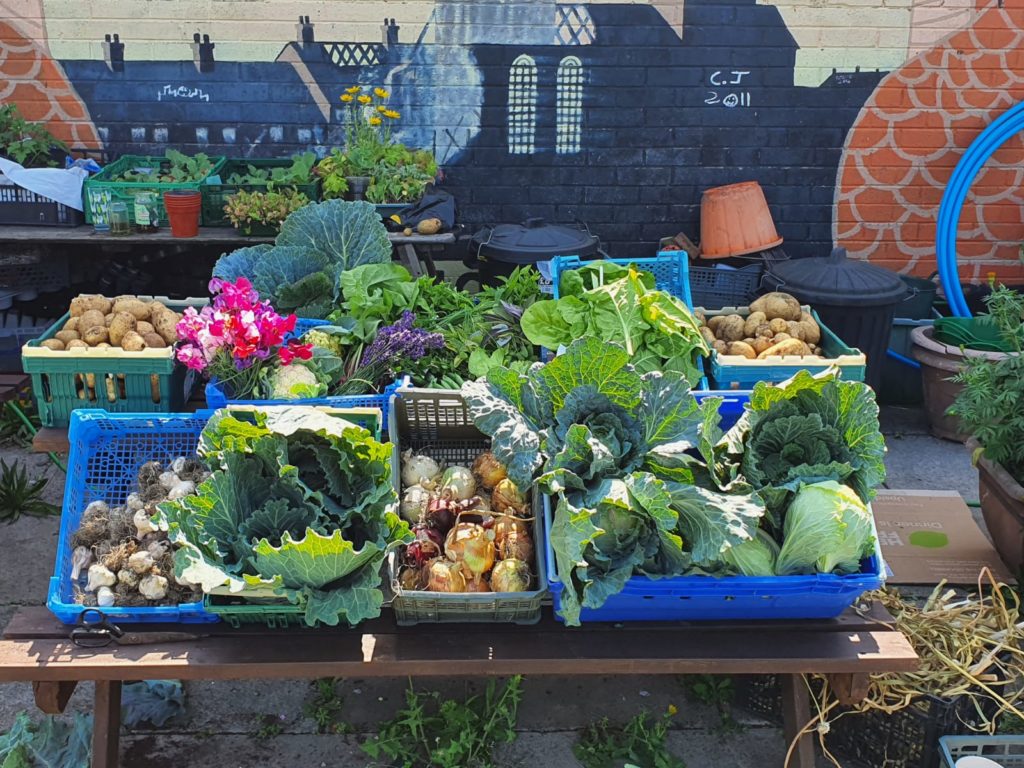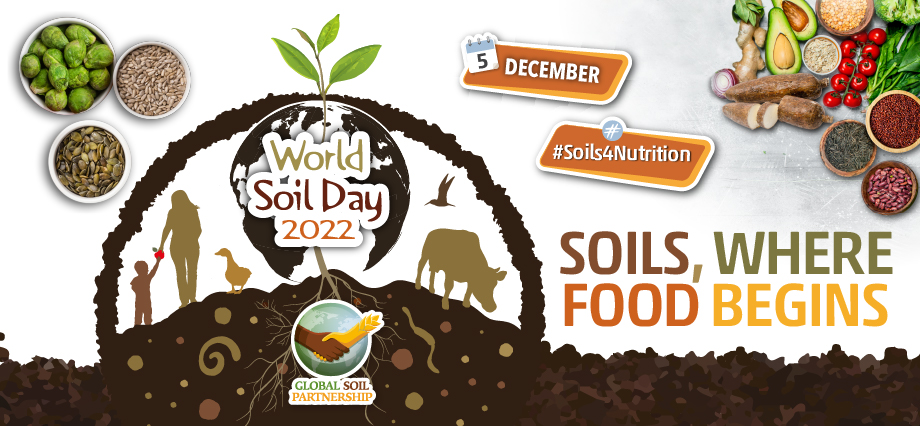Jess Davies, Professor of Soil Sustainability, Lancaster Environment Centre
jess.davies@lancaster.ac.uk Twitter: @ProfJess Davies

Image Credit: Roots in the City Community Garden in Liverpool, part of our Liverpool Growers Network that grew out of Rurban Revolution.
In the hustle and bustle of a city, have you ever stopped to think about the soil under your feet? If not, you can be forgiven. Soils in urban places – be they villages, towns, cities, or suburbs – have often been overlooked by not only the general public, but also scientists.
Soil science has its roots in the 1800s. Emerging out of agricultural necessity and geological curiousity, soil science was founded with scientists like Liebig studying nutrients stored in soils to understand plant nutrition, and Dokuchaev identifying some of the foundational principles of soil formation. To this day, most of our soil science has been focused on agricultural and natural environments.
Whilst soil science was being born on Russian steppes and agricultural fields in the 19th Century, the industrial revolution was rapidly transforming soils across the Western world as urban settlements rapidly grew. As heavy machinery and vehicles became more commonplace, our settlements got denser and roads, railway tracks, pipes and cables disturbed soils across landscapes. Today, whilst urban land use only makes up a small percentage of our land area – only 1% of habitable land supports human settlements and infrastructure globally – the soil in these areas still matters.
Soils provide many services to us as human beings: they infiltrate water helping reduce flood risk, they store carbon helping to regulate the climate, and of course they support plant growth and help put dinner on the table. Most of our food comes from agricultural fields, but what about soils in cities – could they play an important part in food production and our diets? This is a question we have been exploring at Lancaster University through our Rurban Revolution project.
Whilst we might not have dedicated much of our space in towns and cities to growing food today, there’s lots of opportunity to do so. Our study of the UK showed that the greenspace we have in towns and cities could provide us with up to 40% of the fruit and veg we currently grow on farms in the UK or import. This estimate assumes that we can get the same yields on this land as in horticultural farms, and it includes using all of our playing fields, parks and gardens for growing. Using all this space isn’t realistic of course, but it suggests that by even using a small fraction of this land we could significantly boost our supplies of fresh local fruit and veggies.
But can urban soils be as productive as farmland? Our recent research suggests that yes they can! We compiled data from 200 studies conducted across 53 countries around the world where people had measured urban yields, for a whole host of crops. We found that for almost all crops, urban agriculture had average yields as high or higher than conventional farm settings – only sugarbeet did better in the field. Some of the bumper yields come from growing in controlled indoor environments – but crops like cauliflowers, brassicas, beetroots and rhubarb did as well or better in the urban soils.
And what was the most studied urban grown fruit and vegetable? The humble lettuce. Hope you enjoy this recipe from Hugh Fearnley-Whittingstall published by The Guardian – perfect if you have a garden lettuce glut from those too often unsung city soils.
Recipe: Lettuce and spring onion tart (V)
Ingredients
1 tbsp rapeseed or olive oil
4 little gem hearts, trimmed and quartered
15g butter
2 bunches spring onions
100g lancashire (or a medium cheddar or hard goat’s cheese)
2 eggs plus 1 egg yolk
200ml double cream
200ml whole milk
For the pastry:
250g plain flour
A pinch of salt
125g cold, unsalted butter, cut into cubes
About 75ml cold milk
Method
Start with the pastry. Sift the flour and salt together, or give them a quick blitz in a food processor. Rub in the butter with your fingertips – or blitz again – until the mix resembles fine breadcrumbs. Stir in the cold milk, little by little, until the pastry just comes together, then turn out on to a work surface and knead briefly to bring it into a ball. Wrap and chill for 30 minutes.
Heat the oven to 180C/350F/gas mark 4. Roll out the pastry quite thinly and use it to line a 25cm tart tin, leaving the rough edges hanging over the sides. Line with foil and baking beans, and bake blind for 15 minutes. Remove the foil and beans, prick the pastry with a fork in a few places, and bake uncovered for 10-15 minutes more, until just starting to colour. Trim away the excess pastry around the edge.
Heat the oil in a frying pan over medium heat. Add the little gem quarters, season and cook for about five minutes, turning them once or twice, until they’re golden brown on the cut surfaces. Add the butter, letting it melt in the pan, then spoon it over the lettuces. Arrange the lettuce hearts in the pastry case.
Reduce the heat under the pan a little. Trim and roughly chop the spring onions, then sauté gently for five minutes. Add to the tart, then crumble over the cheese.
Combine the eggs, egg yolk, cream and milk, season well, then pour over the tart filling. Bake for about 35 minutes until golden on top. Serve warm or cold.

To celebrate World Soil Day on the 5th of December we have written a series of blogs that dig in (pun intended) to the many connections between soils and food. These blogs are inspired by our sustainable soils research at Lancaster and include a recipe that connects our soil research to the dinner plate! We are publishing a blog a day between 21st November and the 5th of December. We hope you enjoy digging into both our research stories and recommended recipes. Enjoy – bon appetit!